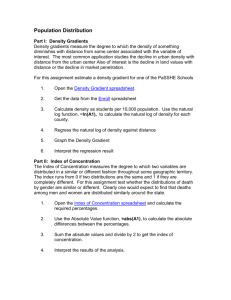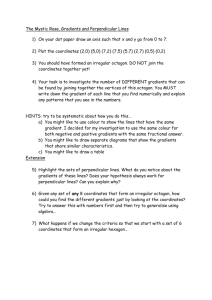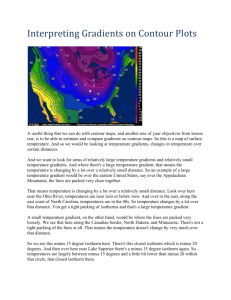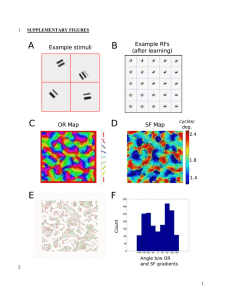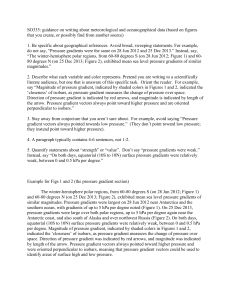supplementary
advertisement
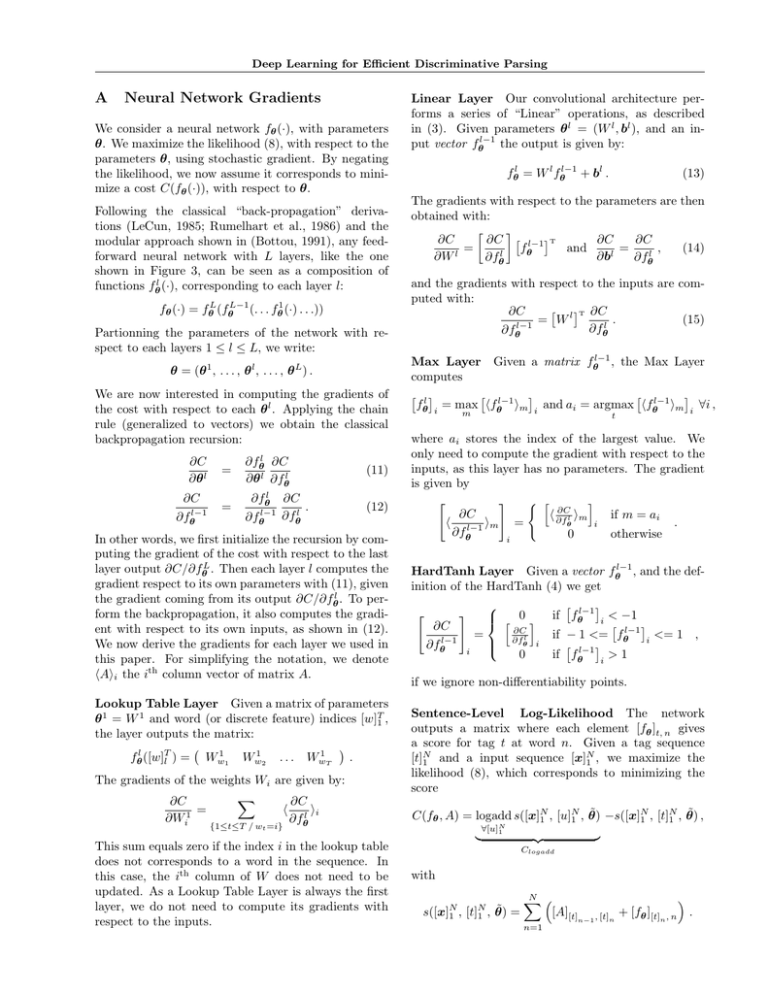
Deep Learning for Efficient Discriminative Parsing
A
Neural Network Gradients
We consider a neural network fθ (·), with parameters
θ. We maximize the likelihood (8), with respect to the
parameters θ, using stochastic gradient. By negating
the likelihood, we now assume it corresponds to minimize a cost C(fθ (·)), with respect to θ.
Following the classical “back-propagation” derivations (LeCun, 1985; Rumelhart et al., 1986) and the
modular approach shown in (Bottou, 1991), any feedforward neural network with L layers, like the one
shown in Figure 3, can be seen as a composition of
functions fθl (·), corresponding to each layer l:
fθ (·) = fθL (fθL−1 (. . . fθ1 (·) . . .))
Partionning the parameters of the network with respect to each layers 1 ≤ l ≤ L, we write:
θ = (θ 1 , . . . , θ l , . . . , θ L ) .
We are now interested in computing the gradients of
the cost with respect to each θ l . Applying the chain
rule (generalized to vectors) we obtain the classical
backpropagation recursion:
∂C
∂θ l
=
∂fθl
∂θ l
∂C
∂fθl
(11)
∂C
∂fθl−1
=
∂fθl ∂C
.
∂fθl−1 ∂fθl
(12)
In other words, we first initialize the recursion by computing the gradient of the cost with respect to the last
layer output ∂C/∂fθL . Then each layer l computes the
gradient respect to its own parameters with (11), given
the gradient coming from its output ∂C/∂fθl . To perform the backpropagation, it also computes the gradient with respect to its own inputs, as shown in (12).
We now derive the gradients for each layer we used in
this paper. For simplifying the notation, we denote
�A�i the ith column vector of matrix A.
Lookup Table Layer Given a matrix of parameters
θ 1 = W 1 and word (or discrete feature) indices [w]T1 ,
the layer outputs the matrix:
�
�
fθl ([w]Tl ) = Ww1 1 Ww1 2 . . . Ww1 T .
The gradients of the weights Wi are given by:
�
∂C
∂C
=
� l �i
1
∂Wi
∂fθ
{1≤t≤T / wt =i}
This sum equals zero if the index i in the lookup table
does not corresponds to a word in the sequence. In
this case, the ith column of W does not need to be
updated. As a Lookup Table Layer is always the first
layer, we do not need to compute its gradients with
respect to the inputs.
Linear Layer Our convolutional architecture performs a series of “Linear” operations, as described
in (3). Given parameters θ l = (W l , bl ), and an input vector fθl−1 the output is given by:
fθl = W l fθl−1 + bl .
(13)
The gradients with respect to the parameters are then
obtained with:
�
�
∂C
∂C � l−1 �T
∂C
∂C
=
fθ
and
=
,
(14)
l
l
∂W l
∂b
∂fθ
∂fθl
and the gradients with respect to the inputs are computed with:
� �T ∂C
∂C
= Wl
.
(15)
l−1
∂fθl
∂fθ
Max Layer Given a matrix fθl−1 , the Max Layer
computes
� l�
�
�
�
�
fθ i = max �fθl−1 �m i and ai = argmax �fθl−1 �m i ∀i ,
m
t
where ai stores the index of the largest value. We
only need to compute the gradient with respect to the
inputs, as this layer has no parameters. The gradient
is given by
�
�
�
� �
∂C
∂C
� ∂f
if m = ai
l �m
� l−1 �m =
.
θ
i
∂fθ
0
otherwise
i
HardTanh Layer Given a vector fθl−1 , and the definition of the HardTanh (4) we get
�
�
�
�
0 � if fθl−1 i < −1
�
�
�
∂C
∂C
if − 1 <= fθl−1 i <= 1 ,
=
∂fθl i
l−1
�
�
∂fθ
i
0
if fθl−1 i > 1
if we ignore non-differentiability points.
Sentence-Level Log-Likelihood The network
outputs a matrix where each element [fθ ]t, n gives
a score for tag t at word n. Given a tag sequence
N
[t]N
1 and a input sequence [x]1 , we maximize the
likelihood (8), which corresponds to minimizing the
score
N
N
N
C(fθ , A) = logadd s([x]N
1 , [u]1 , θ̃) −s([x]1 , [t]1 , θ̃) ,
∀[u]N
1
with
�
N
s([x]N
1 , [t]1 , θ̃) =
��
Clogadd
N �
�
n=1
[A][t]
�
n−1 , [t]n
�
+ [fθ ][t]n , n .
R. Collobert
We first initialize all gradients to zero
∂C
∂C
= 0 ∀t, n and
= 0 ∀t, u .
∂ [fθ ]t, n
∂ [A]t, u
We then accumulate gradients over the second part of
N
the cost −s([x]N
1 , [t]1 , θ̃), which gives:
∂C
∂ [fθ ][t]
+= 1
n, n
∂C
∂ [A][t]
+= 1
∀n .
n−1 , [t]n
We now need to accumulate the gradients over the
first part of the cost, that is Clogadd . We differentiate
Clogadd by applying the chain rule through the recursion (9). First we initialize our recursion with
∂Clogadd
eδN (t)
= � δ (u)
N
∂δN (t)
ue
∀t .
We then compute iteratively:
� ∂Clogadd eδn−1 (t)+[A]t, u
∂Clogadd
=
,
� δn−1 (v)+[A]
v, u
∂δn−1 (t)
∂δn (u)
ve
u
where at each step n of the recursion we accumulate
of the gradients with respect to the inputs fθ , and the
transition scores [A]t, u :
∂C
∂Clogadd ∂δn (t)
∂Clogadd
+=
=
,
∂ [fθ ]t, n
∂δn (t) ∂ [fθ ]t, n
∂δn (t)
and
∂C
∂Clogadd ∂δn (u)
+=
∂ [A]t, u
∂δn (u) ∂ [A]t, u
=
∂Clogadd eδn−1 (t)+[A]t, u
.
� δn−1 (v)+[A]
v, u
∂δn (u)
ve
Initialization and Learning Rate We employed
only two classical “tricks” for training our neural networks: the initialization and update of the parameters
of each network layer were done according to the “fanin” of the layer, that is the number of inputs used to
compute each output of this layer (Plaut and Hinton,
1987). The fan-in for the lookup table (1) and the lth
linear layer (3) (also rewritten in (13)) are respectively
1 and |fθl−1 | (where |z| is the number of dimensions of
vector z). The initial parameters of the network were
drawn from a centered uniform distribution, with a
variance equal to the inverse of the square-root of the
fan-in. The learning rate in (10) was divided by the
fan-in, but stayed fixed during the training.
